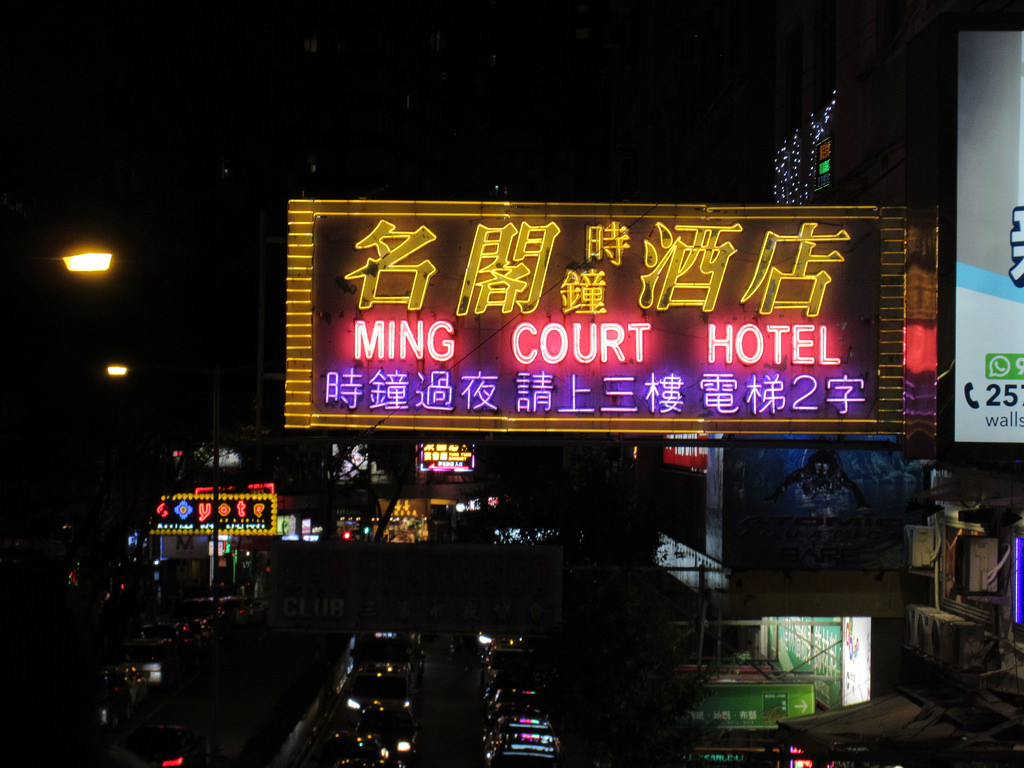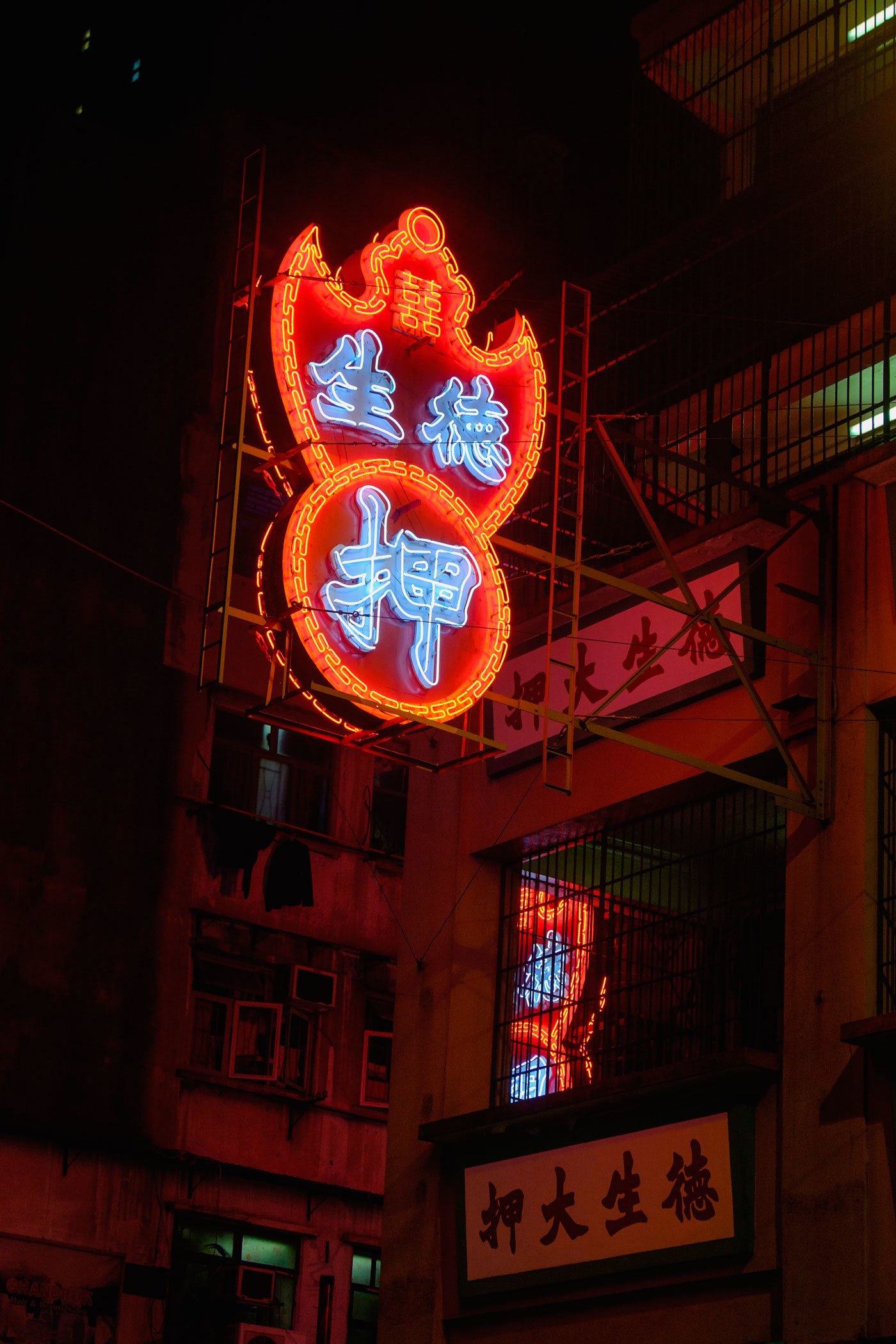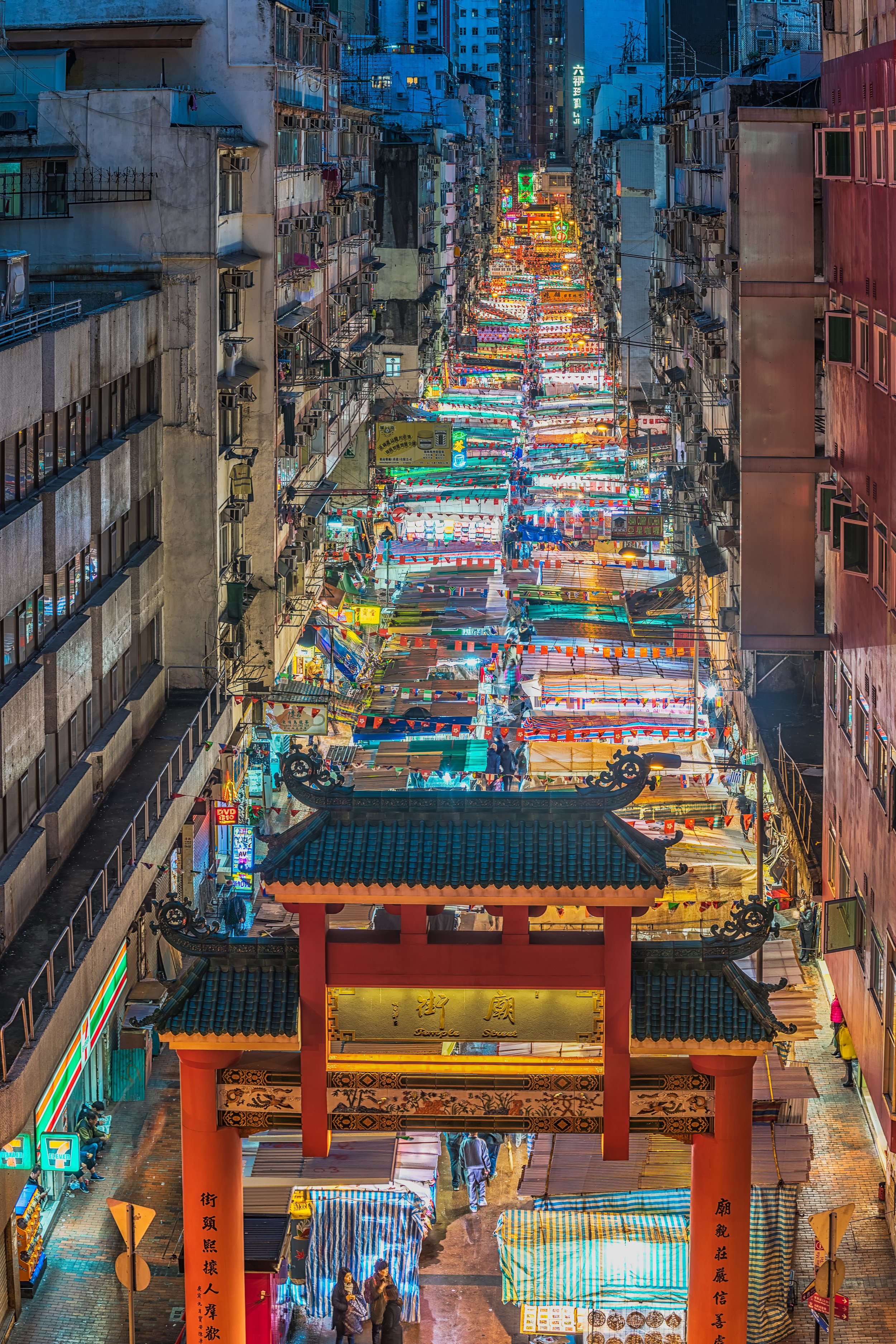The Vanishing Dragon

I have been a latecomer to the delights of Hong Kong, having only visited the city once as a teenager and not returning until a few years ago. I have since been back many times and each time the city continues to intoxicate my senses.
As a bit of a nostalgia nut, it’s hard to enter such a booming business megalopolis, knowing its fine and intricate history, and have to look so deeply for the city of old, when it was still in its infancy and retaining much original character. Hong Kong by night is where it can be found at its most illuminating.
Hong Kong in the 1950’s became one of the brightest lit cities in the world, embracing the art of gaseous neon lighting more than almost any other city. They were an indelible part of the streets and evolving skyline. The biggest boom time for neon began in the 1970’s and at that time no part of the city was dark, such was the proliferation of the signage.
When I first returned to the city in 2016, I was entranced by the atmospheric neon signs I found on my walks through Wan Chai. Now, many visits later, the neon is rapidly disappearing, replaced by far less attractive LED lamps and screens, the look and design having none of the appeal of neon. The cost of maintaining neon signage along with stricter building codes has seen the demise of thousands of the iconic signs.
Neon signs offer a snapshot of time and place in the mid 20th-Century. In Hong Kong, the emblazoned seafood restaurants, nightclubs, saunas, jewelry stores and pawn shops all displayed intricate and colourful neon that revealed layers and opened up like flowers, creating a dazzling, competing display of light that brought a sense of wonder and opportunity to a growing city. Proclamations of the cities prosperity, they announced progress and rejuvenation.
The world has seen Hong Kong’s neon through many major movies including Blade Runner, Chungking Express and Fallen Angels. Wander along Lockhart Road in Wan Chai, once the cities primary red light district, for some great surviving examples, including the Ming Court Hotel and the San Francisco Club.
For a true neon extravaganza as far as the eye can see, head to Tung Choi Street in Mong Kok, where almost every store and restaurant flashes with blazing neon.
At night, Temple Street becomes a neon nirvana, with hundreds of market stalls laid out the length of the street, all iridescent with neon. Viewed from above it’s a stunning sight.
There are still a handful of neon craftsmen operating in Hong Kong. It’s a trade that is dying, the demand long diminished. Future generations will not take up this intricate craft as neon will never have a resurgence to its former glory.
I find it astounding that LED can be considered a serious alternative. So much LED in current day Hong Kong tries to emulate the neon of old. It doesn’t work. There is no visual comparison in style or substance, the only real benefit being reduced power consumption. Neon has a soft light with a beautiful glow all its own. LED is flat and one dimensional.
Many are enamoured with the art of neon and feel the nostalgia and sadness at its loss as I do. If you visit Hong Kong soon, walk the atmospheric streets at night and seek out the neon that remains, appreciate their art and intricacy, and revel in their beauty, no matter what condition they are in, before they disappear forever.



